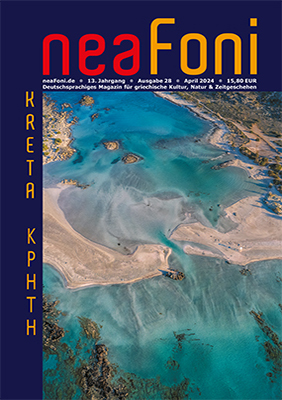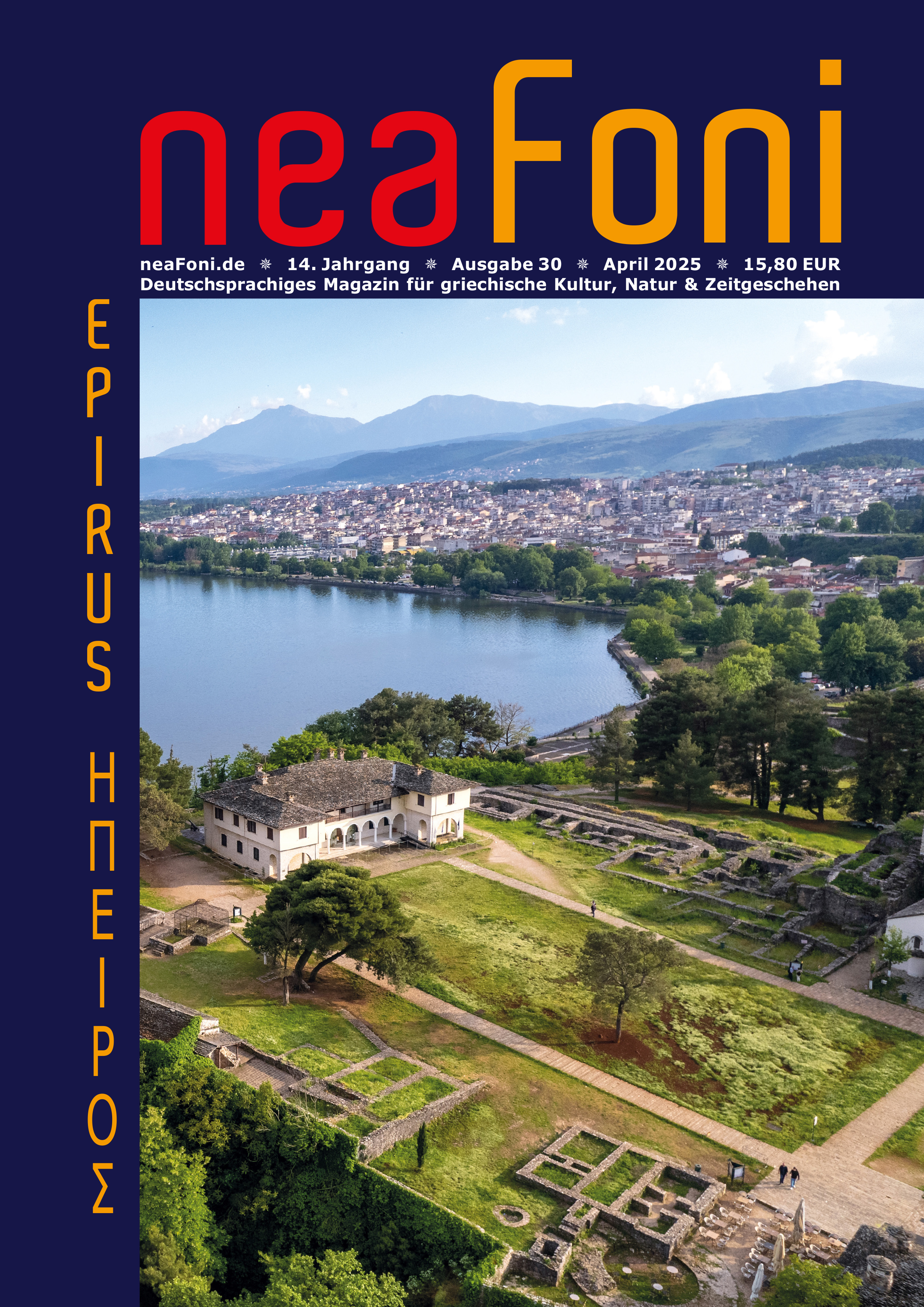Das Freilichtmuseum von Vergina ist angelegt worden, um die von Manolis Andronikos ausgegrabenen Funde des „Großen Grabhügels“, eines Teils der Nekropole von Aigai mit den makedonischen Königsgräbern, zu schützen und zugleich dem Publikum zugänglich zu machen.
Der Grabhügel ist in der Antike zum Schutz der Königsgräber aufschüttet worden. Darunter verbigt sich das Museum, das mit seinen vier sechseckigen Sälen einer Wabe ähnelt; jeder besitzt eine pyramidenförmige Decke. An diese Säle schließen sich zwei weitere langgestreckte an, an die die Königsgräber grenzen.
Nach Betreten des Museums hat man aufgrund der schwachen Beleuchtung den Eindruck, man befände sich unter der Erde. Anhang der Modelle und der Grabungsfotos im ersten Saal gewinnt man einen Eindruck vom ursprünglichen Aussehen des Grabhügels und von der Anordnung der Gräber. Links sieht man Grabstelen aus dem 4. Jh. v. Chr., von denen einige bemalt sind und Inschriften mit den Namen der Verstorbenen tragen.
Im zweiten Saal sieht man das „Grab der freistehenden Säulen“, das nach den 4 teiweise erhaltenen freistehenden dorischen Säulen der Fassade bennant ist. Sie waren vergoldet und nur an der Vorderseite kanneliert. Der Rest des Grabes ist schlecht erhalten, und seine bewegliche Ausstattung war bereits geraubt worden. Es ist wahrscheinlich um 300 v. Chr. angelegt worden.
Im folgenden Saal gelangt man zu einer kleinen hölzernen Plattform, die am sog. Heroon vorbeiführt. Es handelt sich um einen rechteckigen Bau, von dem der Ausgräber angenommen hat, er stünde mit dem Totenkult in Zusammenhang.
Unmittelbar neben dem Heroon befindet sich das „Grab der Persephone“, ein aus großen Porosblöcken errichtetes Kammergrab. An den drei Innenwänden sind außerordentlich kunstvolle Wandmalereien erhalten, auf denen der Raub der Persephone durch Pluton dargestellt ist; original große Reproduktionen sieht man auch an den Wänden des Saales. Die Lebendigkeit der Farben und die Dynamik der Pinselführung hat die Archäologen zu der Vermutung veranlaßt, daß die Malereien von einem der großen Maler Antike, vielleicht von Nikomachos, ausgeführt worden sind.
Man kommt nun zu einer Holztreppe, die zum Königsgrab führt, dem eindrucksvollsten der Gräber, das 1977 unberührt und ungeplündert aufgefunden worden ist. Die Treppe ist über dem antiken, abwärts führenden Zugang angelegt worden. Das tonnegewölbte Bauwerk besteht aus einem Vorraum und der Grabkammer und ist das größte Beispiel des Typus des makedonischen Kammergrabs. Der Tote war in der Grabkammer in einer goldenen Larnax bestattet und ist mit Philipp II., dem Vater Alexanders der Große, indentifiziert worden, der im Jahre 336 v. Chr. im Theater von Aigai ermordet worden ist; im Vorraum ist die Bestettung einer Frau entdeckt worden, in der wahrscheinlich Kleopatra, die letzte Gattin des Königs, zu erkennen ist.
Die mit dorischen Säulen geschmückte Fassade ist durch eine gewaltige Glasscheibe geschützt. Auf dem Fries ist eine Jagdszene dargestellt, die durch die leuchtenden Farben und die heftigen Bewegungen beeindruckt.
Die nächste Holztreppe führt zum sog. „Grab des Prinzen“, einem weiteren Kammergrab makedonischen Typs; es ist etwas später angelegt worden und kleiner als das vorige. In der Grabkammer war ein 14jähriger Knabe bestatte, der offenbar zur königlichen Familie gehört hat. Die Fassade ist mit bemalten Schildsreliefs geschmückt, und die Türflügel sind aus Marmor gearbeitet. Die Wände des Vorraums sind mit der Darstellung eines Wagenrennens bemalt.
Wenn man zum letzen Eingangssaal zurückkehrt, kann man die reichen Funde aus diesen beiden Gräbern bewundern.
In den Vitrinen sieht man die beiden goldenen Schreine aus dem Königsgrab, die die Gebeine der Verstorbenen enthielten; die Seiten sind mit Palmetten und Rosetten verziert, der Deckel trägt einen 16strahligen Stern. Neben der Larnax des Königs liegt der große Eichenkranz und neben derjenigen der Kleopatra ihr kostbarer Schmuck und das Purpurgewebe, in das ihre Gebeine eingehüllt waren.
Die Gebeine im Grab des Prinzen befanden sich in einer silbernen Hydria, um deren Hals ein goldener Kranz gelegt war, der in einer eigener Vitrine ausgestellt ist.
Die übrigen Vitrinen enthalten waffen und andere Objekte, darunter einen mit Gold geschmückten Eisenpanzer, einen aus einer Legierung aus Gold und Silber gearbeiteten Köcher, ein silbernes Weinsieb und eine silberne Kanne mit einem Satyrkopf am unteren Henkelansatz; alles stammt aus dem Königsgrab.
Besonders bemerkenswert ist der Elfenbeinfries von der goldelfenbeinernen Kline, die im Philippsgrab gefunden worden ist. Zwei der Köpfe werden als Porträts Philipps II. Und Alexanders der Große angesehen.
Copyright: Museen Griechenlands
Erevnites Edition
GR.OK.F.B.





